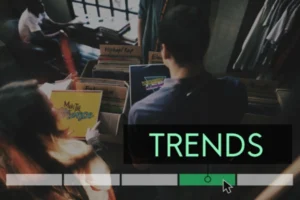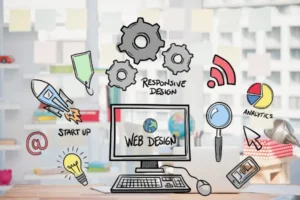CSS Grid and Flexbox are powerful layout tools that have revolutionized web design, making it easier to create complex, responsive layouts. While Flexbox excels at managing one-dimensional layouts (rows or columns), CSS Grid shines in two-dimensional layouts, handling both rows and columns simultaneously. In this guide, we’ll explore advanced tips and techniques for mastering these tools to build modern, adaptable designs.
1. The Core Differences: When to Use Grid vs. Flexbox
- Flexbox: Ideal for laying out items in a single direction (row or column). Best for navigation bars, form controls, and small-scale layouts.
- CSS Grid: Designed for two-dimensional layouts, making it ideal for creating complex page structures like grids, galleries, and dashboards.
Rule of Thumb: Use Flexbox for alignment and CSS Grid for structure.
2. Advanced Flexbox Techniques
- Centering Content (The Flexbox Way)
Flexbox makes centering both horizontally and vertically simple.css.container {
display: flex;
justify-content: center; /* Horizontal centering */
align-items: center; /* Vertical centering */
height: 100vh; /* Full viewport height */
}
- Flexible and Fixed Elements in a Row
Combineflex-grow,flex-shrink, andflex-basisto create layouts where some elements resize while others remain fixed.css.container {
display: flex;
}
.flexible {
flex: 1; /* Takes up remaining space */
}
.fixed {
flex: 0 0 200px; /* Fixed width of 200px */
}
- Creating a Responsive Navbar
Use Flexbox for a navigation bar that adjusts gracefully on different screen sizes.css.navbar {
display: flex;
justify-content: space-between;
align-items: center;
}
.menu {
display: flex;
gap: 20px;
}
3. Advanced CSS Grid Techniques
- Defining Grid Areas for Layouts
Use named grid areas for a semantic and flexible page structure.css.container {
display: grid;
grid-template-areas:
"header header"
"sidebar main"
"footer footer";
grid-template-rows: auto 1fr auto;
grid-template-columns: 200px 1fr;
}
.header {
grid-area: header;
}
.sidebar {
grid-area: sidebar;
}
.main {
grid-area: main;
}
.footer {
grid-area: footer;
}
- Auto-Placement with Grid
CSS Grid automatically places items if no specific placement is defined. Usegrid-auto-rowsorgrid-auto-columnsto control their size.css.container {
display: grid;
grid-template-columns: repeat(auto-fill, minmax(150px, 1fr));
gap: 20px; /* Adds spacing between items */
}
- Creating Overlapping Elements
Grid makes it easy to overlap elements by explicitly setting their row and column start/end points.css.container {
display: grid;
grid-template-columns: 1fr 1fr;
grid-template-rows: 1fr 1fr;
}
.overlap {
grid-column: 1 / 3; /* Span two columns */
grid-row: 1 / 2; /* Occupy the first row */
}
4. Combining Grid and Flexbox
Using Grid for the overall layout and Flexbox for individual components allows for the best of both worlds.
Example:
- Use Grid to structure a dashboard layout with a header, sidebar, and main content.
- Inside the sidebar, use Flexbox to align and space navigation items.
/* Overall Layout */
.dashboard {
display: grid;
grid-template-areas:
"header header"
"sidebar main";
grid-template-columns: 200px 1fr;
height: 100vh;
}.sidebar {
display: flex;
flex-direction: column;
gap: 15px;
}
5. Responsive Design with Grid and Flexbox
- Grid for Responsive Layouts
CSS Grid’srepeat()function and media queries simplify responsive design.css.gallery {
display: grid;
grid-template-columns: repeat(auto-fit, minmax(200px, 1fr));
gap: 10px;
}
- Flexbox for Adaptive Components
Flexbox can wrap items automatically when the screen size changes.css.flex-container {
display: flex;
flex-wrap: wrap;
gap: 10px;
}
.item {
flex: 1 1 calc(33.333% - 10px); /* Responsive width */
}
6. Debugging and Visualization Tools
- Browser DevTools
Use the “Inspect” tool in Chrome, Firefox, or Edge to visualize Grid and Flexbox layouts. Enable grid overlays to see grid lines and cell sizes. - Online Tools
- CSS Grid Generator: Build custom grid templates visually.
- Flexbox Froggy: A fun way to practice Flexbox concepts.
- Linting Tools
Use CSS linters like Stylelint to catch errors and ensure consistency in your code.
7. Real-World Applications
- Photo Galleries
Use Grid to create dynamic, responsive photo galleries that maintain symmetry. - Product Pages
Combine Grid for layout and Flexbox for aligning elements like price tags, CTAs, and product details. - Dashboards
Build complex, responsive dashboards with Grid to handle the structure and Flexbox for detailed adjustments.
Conclusion
CSS Grid and Flexbox are indispensable tools for modern web design. By mastering their advanced techniques, you can create layouts that are not only visually stunning but also highly functional and responsive.
Experiment with these concepts, combine them creatively, and watch your designs transform into polished, professional masterpieces. Ready to elevate your CSS skills further? Start practicing today!







